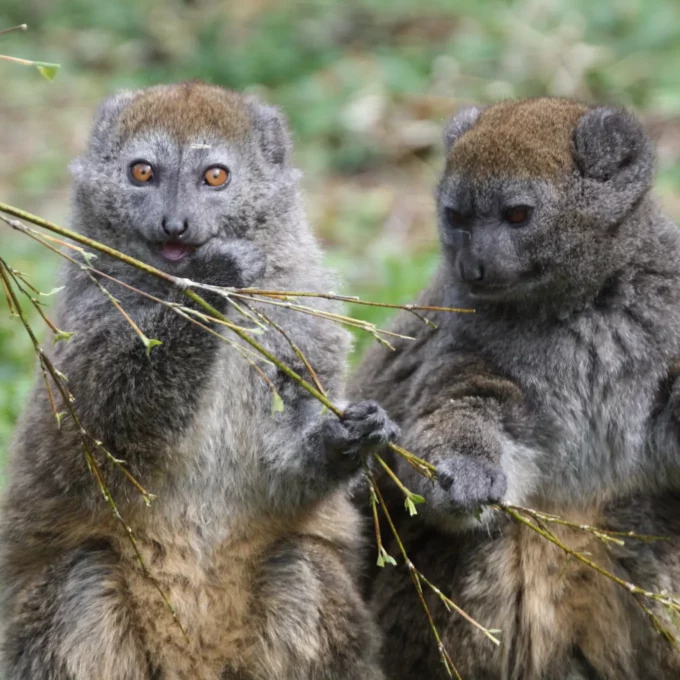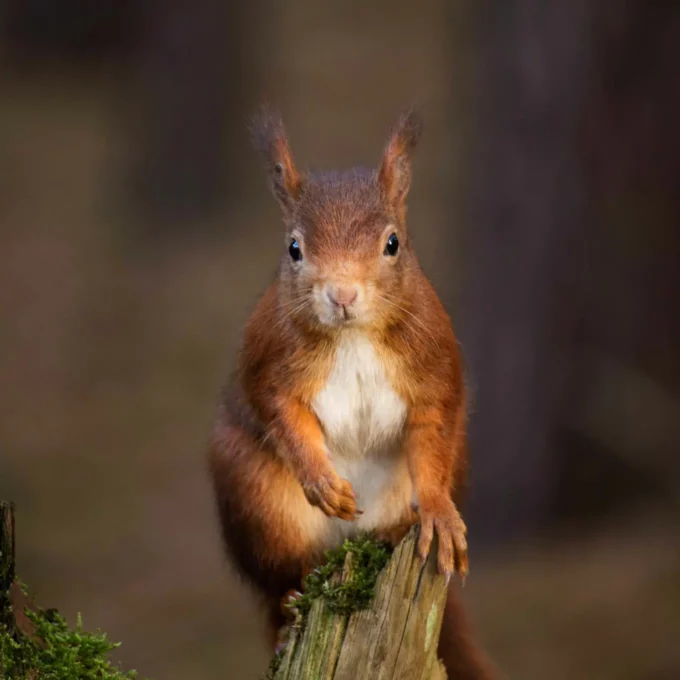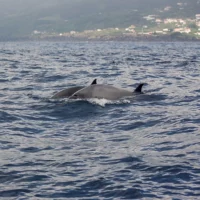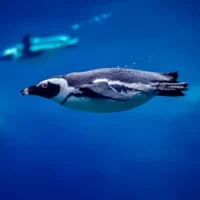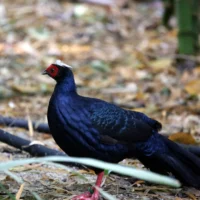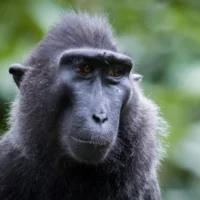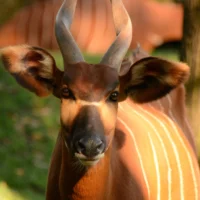Hapalemur alaotrensis feed on marsh vegetation, almost exclusively reeds and papyrus plants within a territory of up to five acres. As highly territorial animals, they chase rival groups away with vocalisations and body language displays. They are cathemeral, meaning they follow irregular patterns of activity each day.
Fun Fact – They are the only primates who live exclusively in wetlands, and they are strong swimmers!
-
Ecology
-
Threats
The most severe threat to gentle lemurs is habitat loss as 6% of marsh habitats get drained annually to be converted to rice fields or cattle grazing lands. Each year, over 1,000 lemurs are hunted for food or as pets, with methods ranging from hunting dogs and snares to burning their habitat to herd them into the hands of hunters. Burning the reed beds also causes soil erosion, which weakens the overall habitat. As of 2018, they were assessed as critically endangered on the IUCN Red List.
-
Conservation
Projects are ongoing to restore the reed bed habitat by removing invasive plant species such as water hyacinth which reduce water quality and outcompete the reeds that gentle lemurs rely on. Local people are being educated on the benefits of protecting their habitat as it improves human access to the lake for fishing. Lac Alaotra and its 722,500-ha watershed is now protected and hunting of these lemurs is banned. A sustained population is also in captive in European zoos. Nature’s SAFE stores samples to safeguard future generations of these lemurs from extinction.
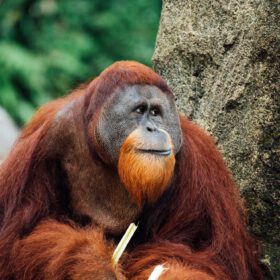
Fundraise for us
Sponsor a Fundraising Hero embarking on a challenge, or plan your own fundraiser to support us.
Get Started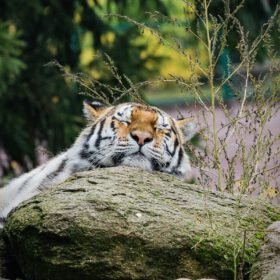
Corporate participation
Explore opportunities to develop a corporate partnership with us.
Get Started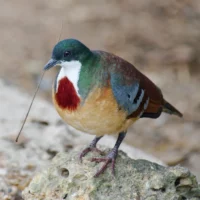
Mandanao bleeding-heart dove
Total Population: Less than 2,500 in the wild
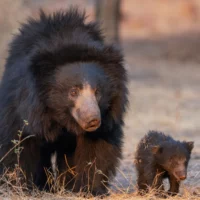
Sloth bear
Total Population: Less than 20,000 in the wild
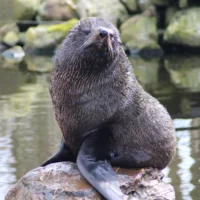
South American fur seal
Total Population: Around 200,000 in the wild
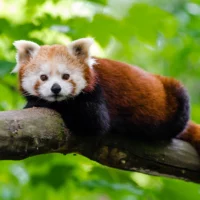
Red Panda
Total Population: Less than 10,000 in the wild
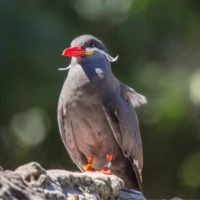
Inca Tern
Total Population: Around 150,000 in the wild
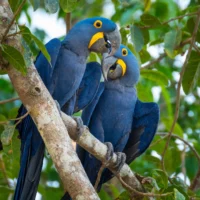
Hyacinth macaw
Total Population: Around 6,500 in the wild
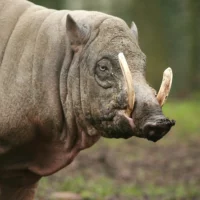
Babirusa
Total Population: Less than 10,000 in the wild
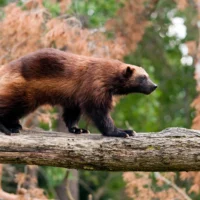
Wolverine
Total Population: Around 13,000 in the wild
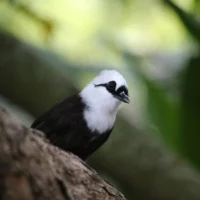
Sumatran laughing thrush
Total Population: 2,500 - 10,000 in the wild
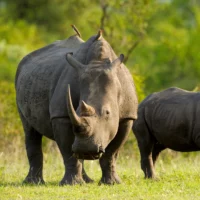
Southern white rhino
Total Population: Around 15,000 in the wild
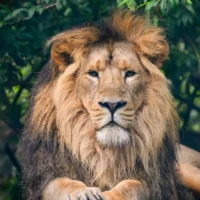
Asiatic Lion
Total Population: Around 650 in the wild
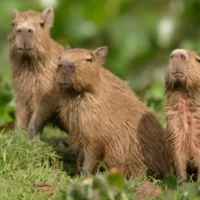
Capybara
Total Population: Unknown
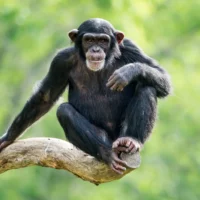
Chimpanzee
Total Population: 170,000 - 300, 000 in the wild
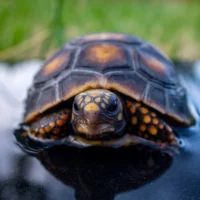
Red-footed tortoise
Total Population: Unknown
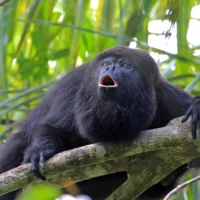
Black howler monkey
Total Population: Less than 5,000 in the wild
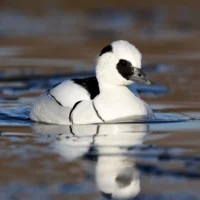
Smew
Total Population: Around 80,000 in the wild
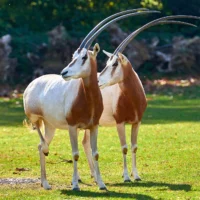
Scimitar-horned oryx
Total Population: Around 400 in the wild
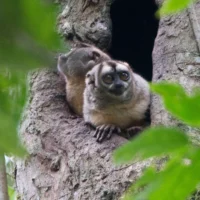
Spix’s night monkey
Total Population: Unknown
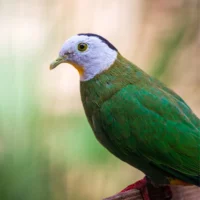
Black-naped fruit dove
Total Population: Unknown
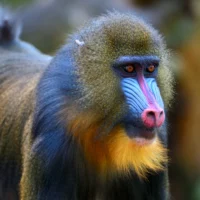
Mandrill
Total Population: Unknown
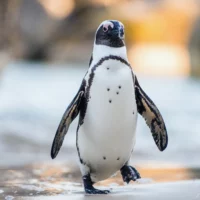
African penguin
Total Population: Less than 40,000 in the wild
